Day 2 :
Keynote Forum
Ajit Sapre
Reliance Industries, India
Keynote: Biofuels and bio-chemicals: One perspective
Time : 09:00-09:30

Biography:
Abstract:
Keynote Forum
Majid Hosseini
The University of Texas Rio Grande Valley, USA
Keynote: Technical challenges of large-scale microalgae harvesting for feed, food, and biofuels production
Time : 09:30-10:00

Biography:
Dr. Hosseini has earned both his PhD and MS degrees in Chemical Engineering from the University of Akron, in Ohio, USA. He has also completed an MSE degree in Manufacturing Engineering at UTRGV in Texas, USA, and a Bachelor’s degree in Chemical Engineering at Sharif University of Technology in Tehran, Iran. Dr. Hosseini has edited book and book chapters, co-invented patents application technologies, and authored multiple peer reviewed research articles. He has served as a key speaker at national and international conferences and meetings and has been actively engaged in technology development. He is a persistent reviewer of leading international journals.
Abstract:
Presently, commercially produced microalgae are used in supplemental nutritional products for humans and animals. There is a great potential for microalgae to be used in food/feed supplements, biofuels production, electricity generation, carbon dioxide biofixation, etc. Throughout the world, many variations on cultivation methods, species of microalgae, harvesting means and the biomass processing technology have been implemented. Even though microalgae biomass has been rigorously studied in both the laboratory and in the field for years, its usefulness is impeded by the difficulty experienced in its large scale cultivation thereby making it commercially infeasible. Nevertheless, there are multiple issues that must be addressed before the widespread adoption of algal biomass production technology. Several species are already being used commercially in raceway ponds, but are still not produced in high enough quantities or in a cost effective manner that is required for fuels and feeds. While algae biomass demand continues to increase globally, producers require technological developments that drive cost reduction while retaining and elevating the quality of the product. Low cost, efficient and scalable harvesting and subsequent dewatering methods require technological advancement in order to drive cost reduction of downstream processing and ultimately biofuel production. The favorability of the carbon and energy balance is what determines the microalgae feedstock’s viability for the production of biofuel. In order to achieve large-scale production levels, not only must processing costs be drastically cut, but more importantly is the development of algae strains that are highly productive and can be cheaply harvested. The systems used for the identification, promotion and utilization of algal biomass are sought after by producers and processors alike so as to ensure profitability, supply security, eco-consciousness, sustainability, market competitiveness, and etc. This work detailed the challenges that microalgae biomass production and utilization face which span the breadth of the algal production chain. Constraints, both chemical and physical in nature, that obstruct mass production and application of large scale algal biomass is also addressed herein. Comparisons between various microalgae harvesting methods and their potential for scalability are discussed. Furthermore, a discussion on the technical, economic and environmental barriers that must be surmounted prior to the introduction of microalgae-based products into the global market is presented.
Keynote Forum
Ange Nzihou
Centre RAPSODEE, France
Keynote: Innovative catalysts for the conversion of greenhouse gases (CO2 and CH4) from biowastes to energy and chemical
Time : 10:00-10:30

Biography:
Abstract:
Networking & Refreshment Break 10:30-10:40 @ Foyer
Keynote Forum
Wei-Hsin Chen
National Cheng Kung University, Taiwan
Keynote: Recent progress in torrefaction for upgrading solid biomass fuels
Time : 10:40-11:10

Biography:
Abstract:

- Special session
Location: Dorothy

Chair
Donald L Rockwood
University of Florida, USA
Session Introduction
Donald L Rockwood
University of Florida, USA
Title: Eucalyptus trees for bioenergy
Time : 11:45-12:05

Biography:
Abstract:
Ronald S Zalesny Jr
United States Department of Forest Service, USA
Title: Fast growing poplars for bioenergy
Time : 12:05:12:25

Biography:
Abstract:
Timothy A Volk
State University of New York College of Environmental Science and Forestry, USA
Title: Shrub willow for bioenergy and ecosystem services
Time : 12:25-12:45

Biography:
Abstract:
Lunch Break 12:45-13:30 @ Foyer A
- Biomass | Bioenergy
Location: Dorothy

Chair
Prabir Basu
Dalhousie University, Canada

Co-Chair
Charles M. Cai
Universitty of California Riverside, USA
Session Introduction
Prabir Basu
Dalhousie University, Canada
Title: A comprehensive study on production of torrefied biofuel using inclined rotary reactor
Time : 13:30-13:50

Biography:
Abstract:

Charles M. Cai
University of California Riverside, USA
Title: Biomass deconstruction towards total carbon utilization for future biorefineries
Time : 13:50-14:10

Biography:
Abstract:
Alberto Abad
ICB-CSIC, Spain
Title: Biomass combustion with CO2 capture by chemical looping
Time : 14:10-14:30

Biography:
Abstract:

Niclas Scott Bentsen
University of Copenhagen, Denmark
Title: Carbon debt of forest bioenergy - Fact or fantasy?
Time : 14:30-14:50

Biography:
Abstract:
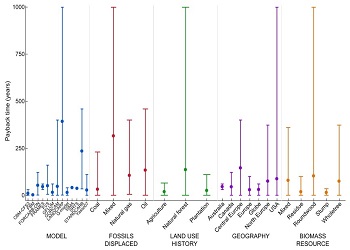
Scott Sattler
USDA-ARS, USA
Title: Modifying lignin content and composition to improve sorghum for bioenergy
Time : 14:50-15:10

Biography:
Abstract:
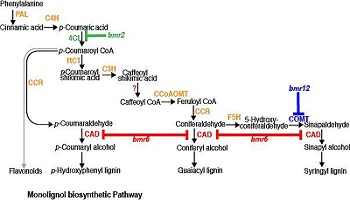
James B Houser
Appalachian State University, USA
Title: Cold climate anaerobic digestion
Time : 15:10:15:30

Biography:
Abstract:
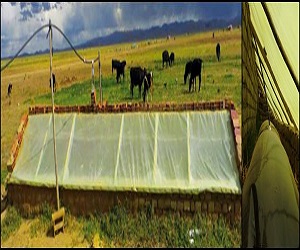
Jacob K Jensen
Michigan State University, USA
Title: Genetic manipulation of the cell wall hemicellulose component as a route to improved feedstock materials for biofuels production
Time : 15:30-15:50

Biography:
Jacob K Jensen has his expertise in plant cell wall materials and their formation. His particular area of interest is cell wall molecular architecture and design principles.
Abstract:
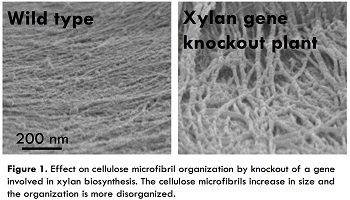
Sally krigstin
University of Toronto, Canada
Title: Storage activity in the woody biomass supply chain: Mitigating GHG emissions and biomass degradation
Time : 15:50-16:10

Biography:
Abstract:
Networking & Refreshment Break 16:10-16:20 @ Foyer
- Biomass | Bioenergy | Session-2
Location: Dorothy

Chair
Vosatka Miroslav
Institute of Botany Czech Academy of Sciences, Czech Republic

Co-Chair
Niclas Scott Bentsen
University of Copenhagen, Denmark
Session Introduction
Adam Campen
Imreys inc., USA
Title: Demonstrating operational stability and high returns on investment using additives in biomass burning power boilers
Time : 16:20-16:40

Biography:
Abstract:
Christina Dorado
USDA-ARS, USA
Title: Steam Explosion for the extraction of sugars, pectic hydrocolloids, phenolics, flavonoids and oils from Citrus sinensis
Time : 16:40-17:00

Biography:
Abstract:
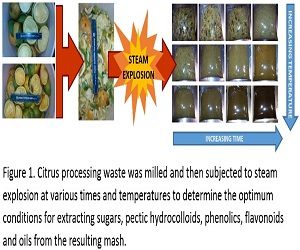
Serpil Özmıhçı
Dokuz Eylül University, Turkey
Title: Evaluation of rise husk for bio-hydrogen production
Time : 17:00-17:20

Biography:
Abstract:
Vosatka Miroslav
Institute of Botany Czech Academy of Sciences, Czech Republic
Title: Ecological management of fast growing trees plantations and biorefinery of added value products from biomass
Time : 17:20:17:40

Biography:
Abstract:
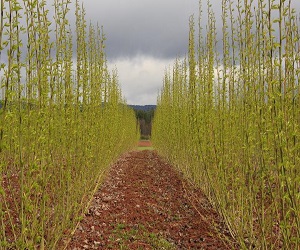
Janaina Camile Pasqual
Pontifical Catholic University of Paraná, Brazil
Title: Water-Energy-Food Nexus: Biogas background and perspectives for Brazil and the United States by 2050
Time : 17:40-17:55

Biography:
Abstract:
Naz Orang
University of Toronto, Canada
Title: Predictive statistical model for optimized biomass boiler operation
Time : 17:55-18:10

Biography:
Abstract:
Augstina E.phram
Centre RAPSODEE, France
Title: Hydrogen chloride removal from wood waste-derived syngas using inorganic sorbents
Time : 18:10-18:25

Biography:
Abstract:
Rajesh MUNIRATHINAM
Centre RAPSODEE, France
Title: Calcium phosphates as a novel support material for catalysis in Fischer-Tropsh synthesis
Time : 18:25-18:40

Biography:
Abstract:
Rachna Dhir
University of California Riverside, USA
Title: Comparing pretreatment and subsequent hydrolysis maximum total sugar yielding conditions organosolv pretreatment to CELF pretreated poplar
Time : 18:40-18:55

Biography:
Abstract:
- Entrepreneur investment meet | Special session |
Location: Dorothy

Chair
Malgorzata Slupska
POET, USA
Session Introduction
Malgorzata Slupska
POET, USA
Title: Advances in the commercial ethanol production
Time : 11:10-11:30

Biography:
Abstract:
Jason Bootsma
Flint Hills Resources, USA
Title: Innovation at Flint Hills Resources
Time : 11:30-11:50

Biography:
Abstract:
Brooks Henningsen
Mascoma LLC, USA
Title: Improving first and second generation ethanol production with biotech yeast
Time : 11:50-12:10

Biography:
Abstract:
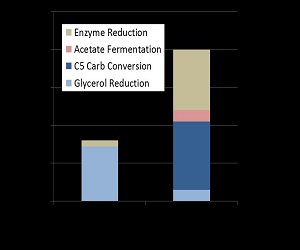
Herman Pel
DSM, Netherlands
Title: Optimizing enzyme cocktails and process conditions for production of cellulosic ethanol
Time : 12:10-12:30

Biography:
Abstract:
Sarah Teter
Novozymes, USA
Title: Customized enzymes and robust yeast- Novozymes’ solutions for cellulosic biorefineries
Time : 12:30-12:50

Biography:
Abstract:
Lunch Break: Lunch Break 12:50-13:30 @ Foyer
- Special talk
Location: Dorothy
Session Introduction
Jeff Passmore
Passmore Group Inc., Canada
Title: Getting to Scale: Choosing the right financing tool, and the right location
Time : 13:30-13:55

Biography:
Abstract:
- Advnaced biofuels | Biorefineries | Bioethanol
Location: Dorothy

Chair
Wolfgang Bauer
Michigan State University, USA

Co-Chair
Kesen Ma
University of Waterloo, Canada
Session Introduction
Wolfgang Bauer
Michigan State University, USA
Title: Comparison of bio-ethanol and biogas: Net energy ratio, total yield, and greenhouse gas emissions
Time : 13:55-14:15

Biography:
Abstract:

Daniel thran
Helmholtz Centre for Environmental Research (UFZ), Germany
Title: Biofuels between manifold expectations - How to assess their potential for sustainable transportation?
Time : 14:15-14:35

Biography:
Abstract:
Shingjiang Jessie Lue
Chang Gung University, Taiwan
Title: Direct ethanol fuel cell performance using polyzenzimidazole/graphene oxide nanosheets electrolyte membrane
Time : 14:35-14:55

Biography:
Abstract:
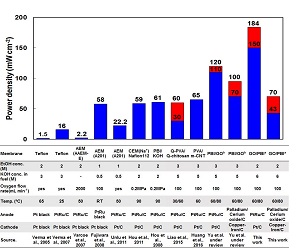
Ian Rowe
U.S. Department of Energy, USA
Title: Engineered carbon cycling strategies for advanced net-zero carbon Biofuels

Biography:
Abstract:
Leandro Soter de Mariz e Miranda
UFRJ, Brazil
Title: Making a bridge between biomass and hydrocarbon in a standard refinery
Time : 14:55-15:15

Biography:
I Graduated in Pharmacy in 2001 and obtained my PhD in 2007 working on the synthesis of natural products. After obtaining my PhD I moved to the Pharmochemical Industry to work on the P&D department in nucleoside chemistry, searching for new synthetic strategies for the synthesis of clinically important nucleosides. In 2011 I Joined the Federal University of Rio de Janeiro and an assistant Professor. In 2011 I went to the University Of Cergy-Pontoise, France, as an Invited Professor to work on Nucleosides against HCV. My research interests are Biocatalysis, Nucleoside and Carbohydrate Chemistry. In 2012 the interest on carbohydrate chemistry led me to work with Lignocellulosic Biomass, in a project with the aim to transform it, in order to allow its introduction into the FCC Unit for the synthesis of green hydrocarbons.
Abstract:
Wensheng qin
Lakehead University, Canada
Title: Effective microbial production of 2,3-butanediol from Biodiesel derived crude glycerol
Time : 15:35-15:55

Biography:
Abstract:

Networking & Refreshment Break 15:55-16:05 @ Foyer
Kesen Ma
University of Waterloo, Canada
Title: Thermostable pyruvate decarboxylases are key enzymes in the alcohol fermentation at high temperatures
Time : 16:05-16:25

Biography:
Abstract:

Nuwan Sella Kapu
University of British Columbia, Canada
Title: Bamboo: A fast-growing feedstock for a biorefinery
Time : 16:25-16:45

Biography:
Abstract:
Franklin Kalu
Heriot-Watt University, UK
Title: The potential black liquor has to improve the sustainability of kraft process if used as feedstock for kraft biorefinery
Time : 16:45-17:00

Biography:
Abstract:
Amanpreet Singh
Engineers India Limited, India
Title: India BioFuel industry- Challenges, Opportunities and business strategies
Time : 17:00-17:15

Biography:
Abstract:
Funmilayo Faloye
University of KwaZulu-Natal, South Africa
Title: Microwave-assisted organic acid pretreatment of starch based agro-residue: Assessment of fermentable sugar and bioethanol production
Time : 17:15-17:30
Biography:
Abstract:
M Ali Mandegari
University of Stellenbosch, South Africa
Title: Fossil fuel co-combustion of lignocellulosic sugarcane biorefineries: Techno-economic analysis (TEA) and life cycle assessment (LCA)
Time : 17:30-17:45

Biography:
Abstract:
- Workshop
Location: Dorothy
Session Introduction
Koji Hashimoto
Tohoku Institute of Technology, Japan
Title: Synthesized natural gas production by dually fluidized bed gasification of woody biomass and subsequent methanation
Time : 11:10 - 11:35

Biography:
Koji Hashimoto is the Professor of Emeritus Tohoku Institute of Technology and Visiting Scholar Tohoku Institute of Technology. He has completed his Postdoctoral studies at the Division of Applied Chemistry, ational Research Council,Canada. He has published over 540 papers in scientific journals in addition to review articles and book chapters. He is the Editorial Board member of "Corrosion Science and the Electrochemical Society of Japan, the Society of Chemical Engineers, Japan. In particular, he has built a prototype plant for global CO2 recycling in 1995 on the roof top of the Institute for Materials Research, Tohoku University.
Abstract:
The current atmospheric carbon dioxide concentration on our planet exceeded 400 ppm, which corresponds to the atmosphere in Pliocene 3.5 million years ago. Our planet had to spend 2.5 million years to decrease it to the pre-industrial level of about 280 ppm mostly by solid carbonate formation as a result of weathering dissolution of rocks on elevated Himalayan Tibet mountain massif due to the heavy rain of the monsoon. It is, therefore, impossible for us to decrease carbon dioxide from 400 ppm to 280 ppm. Only the effort we can do is to decrease carbon dioxide emissions. Our effort of the use of woody biomass in the form of synthesized natural gas is one of the solutions. We formed synthesized natural gas by efficient gasification of woody biomass and subsequent methanation. For gasification of whole-wood pellets including bark, we carried out dual fluidization in both combustion furnace and gasification furnace. In this system we performed gasification by thermal decomposition and steam gasification avoiding nitrogen contamination and achieved more than 75% cold gas efficiency of the calorific value of the wood, obtaining high concentration of hydrogen. We used a novel tar reformer with a catalyst and attained 99.9% tar reformation in the pilot scale experiment, without deterioration for 8000 h in the laboratory scale experiment. After gasification, we sent a mixture of hydrogen, carbon monoxide, carbon dioxide and steam to the methanation reactor, which uses Ni-ZrO2 type oxide catalysts. The reactor converts a mixture of 4 volumes of hydrogen and one volume of carbon dioxide to methane with almost 100% methane selectivity and about 90% conversion efficiency at 300 °C and ambient pressure. In fact, carbon monoxide at first reacted with steam shifting to hydrogen and carbon dioxide (CO+H2O=H2+CO2). Thus, the amount of methane formed was a quarter of the sum of hydrogen and carbon monoxide in the reactant gas (4H2+CO2=CH4+2H2O). We performed a demonstration at 38 Nm3/h of reactant gas with 40% steam to form methane with more than 70% calorific efficiency. The process simulation showed that the methane purity is higher than 99% after membrane separation.
- Special talk
Location: Dorothy
Session Introduction
Jim Grey
Chair of renewable industries and CEO IGPC Ethanol Inc., Canada
Title: Special talk
Time : 11:35-12:00

Biography:
Abstract:
- Biodiesel | Biogas | Algae Biofuels
Location: Dorothy
Session Introduction
Antonio Domingos Padula
UFRGS, Brazil
Title: A competitiveness analysis of alternative oilseeds for biodiesel production in Brazil
Time : 12:00 - 12:20

Biography:
Antonio Domingos Padula is Professor at the School of Management of the Federal University of Rio Grande do Sul (UFRGS), holds a degree in Mechanical Engineering from the School of Engineering of São José dos Campos (1980), Diplome D'Etudes Approfondies in Business Administration - Université de Sciences Sociales of Grenoble (1988) and doctorate in Business Administration - University of Social Sciences of Grenoble (1991). It operates in the following areas: production chains, agribusiness, bioenergy, industrial competitiveness, production strategy and operations. Participation in national and international projects: Coordinator CAPES-FIPSE-USA Project; Cooperation UFRGS-Nanjing Agricultural University (China); Cooperation UFRGS-Beijing Technology and Business University; UFRGS-UC-Berkeley Cooperation; Researcher in the Structuring Project of agroenergy in RS (FINEP and FAPERGS) and in the Pathways to Innovation Project in RS (CNPq-Pronex). This researcher participates with ad hoc consultant for CNPq, CAPES, FINEP, ... and in national and international journals.
Abstract:
The quest to develop energy matrices with higher content of renewable energy has encouraged efforts in different countries to produce and use liquid biofuels as substitutes for petrol and diesel. Biodiesel is a fuel produced from renewable sources such as vegetable oils and animal fats. In Brazil, the production and use of biodiesel is regulated by the institutional framework proposed by the national program for the production and use of biodiesel (Programa Nacional Produção e Uso de Biodiesel Produção - PNPB). The diversification of raw materials to produce biodiesel is among the main PNPB objectives. However, in Brazil, this biofuel is predominantly produced using soybeans (83%). In order to understand the reasons for the predominance of this oilseed, this research evaluated the competitiveness, economic efficiency and political effects of biodiesel production using three alternative oilseeds in Rio Grade do Sul state (the largest biodiesel producer in Brazil): Soybean, canola and sunflower. The research was conducted using the Policy Analysis Matrix (PAM) approach, which assists in analyzing and defining public policies and identifying possible market failures that might influence the economic outcomes of agribusiness chains, while assessing the competitiveness and efficiency of those systems. The results indicate that the three oilseed chains are competitive. Nevertheless, the superiority of biodiesel production from soybean chain is notable, as this chain is well organized, more competitive and more economically efficient. On the other hand, policy distortions were observed which disadvantage the private and social profitability of the three studied chains, such as the farmer’s payment system based on the seed weight, although the percentage of oil and prices differ substantially among the different raw materials, besides the significant differences in technological standards adopted in the different crops production. The results indicate the need to review the tax incentive policies, subsidies and payments to farmers of the different crops used for the production of biodiesel.
Ana Paula Alonso
The Ohio State University, USA
Title: A systems approach to improve oil synthesis in alternative crops
Time : 12:20 - 12:40

Biography:
Ana Paula Alonso is Associate Professor in the Dept. of Molecular Genetics, and Director of the Targeted Metabolomics Laboratory at The Ohio State University. A major focus of the Alonso Lab is the regulation of carbon partitioning through central metabolism. In plants, central metabolism carries carbon to the production of valuable storage compounds, such as sugars, proteins, starch, oils, and cellulose. Therefore understanding carbon partitioning is of fundamental relevance to plant fitness, fruit quality, seed yield and germination, and to designing novel approaches for breeding and genetic engineering of crops. For this purpose, the Alonso Lab combines metabolomics and 13C-based metabolic flux analysis - association of modern biochemistry with mathematical modeling. Current research aims at: Enhancing the flow of carbon towards the production of unusual fatty acids for biofuel and industrial applications and understanding the effect of biotic and abiotic stresses on plant metabolism.
Abstract:
Statement of the Problem: Physaria fendleri is a Brassicaceae that produces hydroxy fatty acids (HFAs) in its embryos; a type of oil that is very valuable and widely used in the industry of cosmetics, lubricants, biofuels... The goal of this study is to design an effective strategy for improving HFAs production by Physaria. Indeed, free of toxins and rich in HFAs, Physaria is an attractive alternative to imported castor oil, and is hence in the verge of commercialization. Moreover, Physaria has tremendous potentials for oil production, has a short maturity time and is not used for food compared to other oilseed crops. HFA production could theoretically be enhanced by classical breeding or genetic engineering approaches, however a lack of knowledge of the metabolic pathways underlying oil synthesis in Physaria seeds presents a major constraint. This study aims to find potential biochemical step(s) that limit(s) oil synthesis, which will serve as targets for future crop improvement.
Methodology & Theoretical Orientation: To advance towards this goal, we determined the intracellular metabolite levels (metabolomics) in Physaria embryos at different stages of development. For this purpose, we have developed novel and highly sensitive methodologies using state-of-the-art liquid chromatography tandem mass spectrometry (LC-MS/MS). The contribution of each pathway to fatty acid synthesis in terms of carbon, reductant and energy provision is being assessed by measuring the carbon flow through the metabolic network.
Findings: The metabolomics study highlighted the metabolites and pathways that were active in Physaria embryos and important for oil production. We are now performing a 13oC-Metabolic Flux Analysis (fluxomics) to build a map of carbon flow through central metabolism.
Conclusion & Significance: This study describes the combination of innovative tools that will pave the way for controlling seed composition in promising alternative crops.
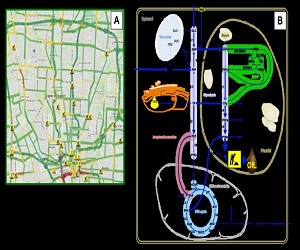

Biography:
Anh N Phan has expertise in the field of reactor engineering/process intensification, biofuel processing and biorefining of waste biomass. She is also interested in kinetic modeling and catalysis. She has published more than 25 papers in high-impact factor journals with h-index of 14. Since 2013, her research has also focused on cold plasma technology and its applications in chemical processes, biorefining and waste treatment.
Abstract:
Biodiesel, a mixture of fatty acid esters formed from a transesterification of triglyceride containing feedstock with a short chain alcohol with or without catalyst, is an alternative to petro-diesel. Biodiesel is superior to petro-diesel because it has low sulfur content, high flash point temperature and lubricity and is biodegradable. It is produced from sustainable feedstock (i.e., vegetable oil, microalgae, waste oil), therefore reducing greenhouse gas (CO2) emissions. Biodiesel production is commonly carried out in batch mode in the presence of alkali catalyst and the required reaction time is up to 2 hours in order to obtain biodiesel that meets a fuel standard (i.e., EN14214). Transesterification is a two-phase reaction therefore the rate of the reaction is mass transfer-controlled. Mixing plays an important role throughout the process due to the low miscibility of oil and methanol initially and byproduct glycerol and esters in the final stages. If the mixing is insufficient, stratification (separation) could occur, therefore reducing reaction rates and this phenomenon is particularly pronounced as the phase separation removes the catalyst from the reaction mixture due to the much better solubility of sodium/potassium hydroxide in the glycerol phase. Oscillatory mixing can be effective method of eliminating mass transfer limitations in two-phase liquid systems due to its mode of mixing. An oscillatory baffled reactor (OBR), a form of continuous plug flow reactor was used to intensify the process. Biodiesel can be produced at an industrially acceptable level (>95%) in 2-5 minutes reaction time, approximately a 60-80% reduction in reactor size to obtain the same throughput. The reactor can be used for multi-stage operations and for two-stage biodiesel production for high free fatty acid feedstock. Another advantage of OBR is that, the scale up is predictable, meaning that conditions obtained in laboratory scales can be used for pilot/industrial scales.

Lunch Break 13:00-14:00 @ Foyer
A. Rajendiran
Bharat Petroleum corporation ltd, India
Title: Antiwear study on petroleum base oils with esters
Time : 14:00 - 14:20

Biography:
A Rajendiran is presently working as a Deputy General Manager (R&D) Bharat Petroleum Corporation Ltd in Mumbai, India. Dr.A.Rajendiran has completed his Ph.D from Annamalai University (Public University),Tamil Nadu,India He has 15 years of experience on development of lubricants. He has been involved in developing industrial products, Automotive specialty products and bio degradable lubricants. He was handling various base oils including synthetic base oil like ester base oil, PAO and PAG base oils etc. He has wide experience in NMR, FTIR spectral studies. Prior to this, he worked as the in-charge of Quality control lab about 12 years. He had experience of Motor sprit, High speed diesel, Furnace oil and Kerosene. He has wide experience on testing of testing fuels including Aviation fuels and lubricants, Chennai.He is the life member of The Indian Science Congress Association, India and Tribology society of India. Also he is the member(FRSC) Royal society of chemistry, London
Abstract:
Petroleum based mineral oils have been popularly used for manufacturing lubricants for industrial applications. However, due to concern of environmental pollution, the trend is to attempt to migrate to environment friendly and biodegradable lubricants, by using vegetable oils and synthetic esters, as these too can function as lubricants. This study covers our findings that substantial reduction in friction and wear can be achieved by mixing various proportions of mineral base oils and esters, without adding any conventional antiwear additives. Also, this study reveals the optimum dosage of esters used for reduction of wear and friction. This study is a useful tool for development of lubricants for industrial applications.
Luis F Barahona
CICY, Mexico
Title: Biofuels production from microalgae extracts (green diesel and biokerosene)
Time : 14:20 - 14:40

Biography:
Luis F Barahona has been working on biofuels production from agro-industrial residues. The processes are developed at laboratory scale but focused on the use of regional biomass and easy scale-up. He has applied biotechnological and chemical expertise to better understand the effects of process conditions on biofuels yields as well as sustainable processes.
Abstract:
The production of alternative bio jet fuels is mainly driven by environmental concerns and dependence on fossil fuels. Renewable feed stocks have been studied to provide biofuels with high energy densities, good cold flow properties and stability. Non edible oils and microalgae oils have been used to synthesize bio jet fuel and proved by several airlines. Oil palm, Jatropha, Camelina and microalgae are the most common feed stocks used until now. Due to their productivity, microalgae have good potential to be used as feedstock for biofuels production. Several studies have been carried out to assess their potential to produce three main chemical fractions: Lipids, carbohydrates and proteins that can be converted into biodiesel, bioethanol, biohydrogen and methane. In our group, we are studying the adaptation of the freshwater microalga Scenedesmus obliquus to synthetic wastewater and molasses ascarbon source. The effect of culture time on lipid profiles and the synthesis of biofuels from the microalgal extracts will be discussed.
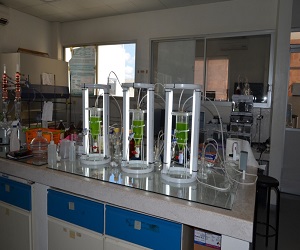
Giovanni Antonio Lutzu
Oklahoma State University, USA
Title: Feasibility of using brewery wastewater for biodiesel production and nutrient removal by scenedesmus dimorphus
Time : 14:40 - 15:00

Biography:
Giovanni Antonio Lutzu is an Environmental Biologist, has strong interest on the use of microalgae for environmental remediation and as a priceless source of biofuels and high-value added products. He has obtained his PhD at University of Cagliari, Italy, investigating the growth kinetics of microalgae in batch and semibatch photo-bioreactors. Later, during his Postdoctoral Fellowship at the QIBEBT, China, he has focused his attention to the extraction of lipids relevant to the production of microalgal biofuels and to the enhancement of biomass as feedstock for high-value natural products. His ultimate goal as a Scientist has been to explore the feasibility of using wastewaters as a culture medium to enhance lipid and bioproducts accumulation in microalgae. Presently, he is carrying out research at BAE-OSU on the feasibility of using isolated Oklahoma native microalgae strains for the treatment of wastewater generated during the fracking activity for the extraction of oil and gas.
Abstract:
A new type of wastewater, which has potentially been recognized as an appreciable source of nutrients for microalgae cultivation, is represented by the brewery wastewater produced by the brewing industry. This work investigates the potential use of this effluent as a medium for the cultivation of the oleaginous species Scenedesmus dimorphus with the double aim of removing nutrients and to produce biomass as feedstock for biodiesel. For this purpose, effects of nitrogen (61.8-247 mg L−1), phosphorous (1.4-5.5 mg L−1) and iron (1.5-6 mg L−1) concentrations on growth, nutrients uptake, lipid accumulation and fatty acids profile of this microalga were investigated. Results showed that brewery wastewater can be used as a culture medium even if nitrogen and phosphorous concentrations should have been modified to improve both biomass (6.82 g L−1) and lipid accumulation (44.26%). The analysis revealed a C16-C18 composition of 93.47% fatty acids methyl esters with a relative high portion of unsaturated ones (67.24%). High removal efficiency (>99%) for total nitrogen and total phosphorous and a reduction of up to 65% in chemical oxygen demand was achieved, respectively. The final microalgae biomass, considering its high lipid content as well as its compliance with the standards for the quality of biodiesel and considering also the high removal efficiencies obtained for macronutrients and organic carbon makes the brewery wastewater a viable option as a priceless medium for the cultivation of microalgae.
Ashwin Gajra
Reliance Industries Limited, India
Title: Recycle of process streams for sustainable production of algae biofuels
Time : 15:00 - 15:20

Biography:
Ashwin Gajra has more than 15 years of experience in developing products and processes for Biotech applications. He has developed, scaled up and transferred technology for biofuels, biopharmaceuticals, diagnostic markers and waste water treatment and animal feed. He is currently developing cost-effective processes for separation and dewatering of algae, for biofuels and other high value applications.
Abstract:
In spite of several benefits offered by microalgae biomass as a feedstock for biofuels, high material and energy costs linked with production process poses a challenge of sustainability. Along with large volumes of water, nutrients (Nitrogen and Phosphorus) are among the substantial costs in cultivating algae. One of the many strategies to reduce the cost of cultivating algae is to lower the water footprint and reduce the nutrient requirement by efficient recycle of process streams. At Reliance Industrial Limited (RIL), the process development effort has an extensive focus on recycle of various process streams, to develop sustainable algae to oil process. This presentation will summarize the work carried out through targeted research leading to optimum recycle of harvested water and nutrients from different process streams; without any adverse impact on growth and productivity. Small-scale development work was carried out outdoors (in aquarium), in a semi-turbidostat mode, with water and nutrients supplementation from recycled process streams. Impact of inhibitors/toxic matter due to build-up in the system was studied. The results indicate a significant improvement in cost savings due to recycle of water and nutrients.

Javid Hussain
Institute of Chemical Sciences University of Peshawar, Pakistan
Title: Microbial based biofuel production: potential impact on the control of global warming
Time : 15:20 - 15:40

Biography:
Javid Hussain graduated (PhD) in 2016 from the UFBA and MSU, United States and where his supervisors were Drs. Iracema Nascimento and Dr. Wei Liao. In 2010, He received a Master’s degree in Environmental Chemistry from the Institute of Chemical Sciences, University of Peshawar, Pakistan and in 2011 was admitted to MPhil program at the same institute. During his MPhil year, He received PhD offers from three countries (Australia, Brazil and South Korea). He accepted The World Academy of Sciences Award for PhD study.He has been published more than 12 papers in international peer-reviewed journals. He received grants from The World Academy of Sciences (TWAS) to attend bioenergy conferences and events held in South America, North America, and Europe, and he delivered lectures at international events in four continents.
Abstract:
Environmental pollution and global warming is one of the biggest issues of world today. Environmental pollution is mainly due to anthropogenic way, mostly caused by human daily activities, usage of fossil fuels. In turn these are causing an increase in global warming. Although there are advantages of the fossil fuels in industry, but on the other hand the same fuels are also contributing the biggest amount of pollutants to the environment e.g., particulate matters, greenhouse gases which are involved in acid rain. For the last decade the world big economy pillars i.e., US, China, Brazil, Australia and some other European Countries have been giving great attention to solve the issue by increasing the production of biodiesel which are derived from various organic resources such as oleaginous fungi, microalgae, plants and animal fat. Biodiesel production is presently based on edible vegetable oils. The commercialization is challenged by high production cost and has been of the great concern regarding food vs. fuel competition. The proposed study is focused on finding non-edible oil sources such as algae. These microorganisms minimize competition with conventional agriculture, have fast growth rates, utilize a wide variety of water source, recycle stationary emissions of carbon dioxide and have high areal productivity. If we do commercialize it in market then the only option left is to produce microbial-based biodiesel, which have very good fuel properties and reduce the CO2 concentration in atmosphere. Moreover, this talk will outline recent progress made in understanding and optimizing the use of microorganisms such as algal, fungus which act as producers and decomposers in ecosystem. If scientifically and adequately explored, it will play an important role in energy sector, environmental sustainability and natural socio-ecological systems.
Henry T Bedoya
University of Life Sciences, Norway
Title: Production of Microalgae Biomass (MAB): A cost-efficient, profitable, sustainable and quality upscaling of five commercial microalgae strains in greenhouse at northern latitudes
Time : 15:40 - 16:00

Biography:
Henry T. Bedoya Has background in biological, botanical and microbiological studies and degrees from Kharkov´s National State University, Ukraine; University of Oslo, Norway and The University of Life Sciences of Norway. Field studies in food production at greenhouse conditions and specialization in microalgae biomass (MAB) production in greenhouse at northern latitudes. This journey started in Ukraine and continued in Norway with production and delivery of the MAB for the EU project under the Research for SME program titled, “Operation SWAT” under contract n: 286840 and comprehended cost-effective MAB production in two processes: upscaling and harvesting by flocculation and filtration. SWAT involved R&D institutions from Czech Republic, Germany, Poland, Spain UK and Norway. Bedoya´s work at NMBU and IGV-GmbH results and findings, generated the core data for the recreation of a conveyor belt filter device from the wastewater treatment industry (Salsnes Filter Series), into a device specialized in MAB harvesting.
Abstract:

Andisheh Yazdanpanaha
University of Western Ontario, Canada
Title: Effect of trace metals addition on food waste anaerobic digestion
Time : 16:00 - 16:20

Biography:
Andisheh Yazdanpanah is a a graduate student at Western University, London, Ontario
Abstract:
This study presents the impact of trace elements supplementation (TEs: Fe [50-400 mg/L], Ni [0.5-20 mg/L], Co [0.1-5 mg/L], Se [0.005-0.8 mg/L] and Mo [2-20mg/L]) individually as well as in mixtures on the specific methanogenic activity (SMA), maximum specific methane production rate (SMPRmax) and apparent hydrolysis rate constant (Kh) of food waste (FW) anaerobic digestion. Seriesof batch anaerobic digestion tests with kitchen FW as substrate were performed at various concentrations of different TEs under mesophilic conditions using Fe-rich inoculum (≈1.7 g/L). The results of this study revealed that addition of TEs adversely impacted methanogenic activity especially at the maximum concentrations of Fe, Ni, Co and Se by 47%, 70%, 33% and 37%, respectively. The effect of Mo on the methane production and SMA rate was neutral. Fe, Ni, and Co significantly affected the methane productions at elevated concentrations unlike Se and Mo. Impacts of individual supplementation of Fe, Co, Ni, Se and Mo on the SMPRmax and Kh were negligible except for Fe (400 mg/L) which moderately reduced the SMPRmax by 24%. Similar results to the control (no TEs addition), were also observed for the Kh when different mixtures of TEs were used, however, unlike the Kh, positive impacts on the SMPRmax (12%-22% enhancement) were obtained, possibly indicating the synergy. It is postulated that the high concentration of Fe in the used inoculum played an indispensable role in reducing the bioavailable fraction of metals in the form of free metal via precipitation, co-precipitation and adsorption in both single and multiple TEs addition forms.

